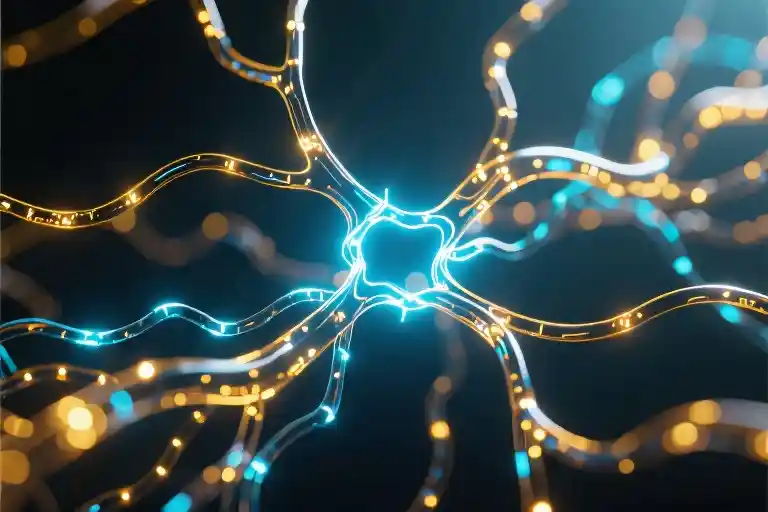The glow of smartphone screens illuminates countless faces in the midnight hour, yet a Pew Research study reveals 68% of respondents report feeling emptier after these digital binges. This paradoxical exhaustion in our hyper-connected age sets the stage for an ancient antidote – a joy that doesn’t require charging cables or WiFi signals. Nestled in Nehemiah 8:10 lies a radical proposition: “The joy of the Lord is your strength.”
Imagine Jerusalem’s reconstructed walls casting long shadows as this declaration first echoed through the jubilant crowd. The physical barrier stood completed, but Nehemiah pointed to an invisible fortress – divine joy as the ultimate sustainer. This same joy now bridges centuries to address our modern fatigue, not through escapism but through a peculiar kind of resilience.
What makes this joy different surfaces in its biblical context. While the Israelites celebrated their architectural achievement, their leader redirected attention to something more foundational than mortar and stone. The Hebrew word ‘simcha’ used here carries connotations of communal celebration and covenantal faithfulness, far removed from today’s fleeting dopamine spikes. It’s joy that persists when notifications stop buzzing, when vacation photos fade, when life’s walls crumble unexpectedly.
This introduction isn’t about dismissing technology’s place in our lives, but about introducing an alternative energy source. Like discovering your phone had a solar charging capability you’d never activated, the joy described in Scripture operates independently of external circumstances. The passage invites us into a counterintuitive reality where strength isn’t mustered through gritted teeth, but accessed through surrendered joy – a concept we’ll unpack like archaeologists examining Jerusalem’s ancient stones.
As we explore this theme, we’ll encounter surprising intersections between neuroscience and spirituality, between ancient building techniques and modern emotional resilience. The walls Nehemiah rebuilt became literal infrastructure for worship; the joy he proclaimed becomes infrastructure for daily living. Whether facing workplace tensions, health battles, or the simple weight of existing in turbulent times, this joy offers not escape from reality but transformation through it.
When Joy Becomes a Building Tool
That moment when the last stone was set into Jerusalem’s wall, the air must have tasted different. Not just the dust of limestone settling, but something deeper – the metallic tang of tears mixed with laughter, the collective exhale of a people who’d carried rubble and hope in the same calloused hands. Nehemiah’s declaration – “the joy of the Lord is your strength” – wasn’t spiritual rhetoric. It was architectural wisdom passed down from the Builder of the universe.
Seventy days earlier, these same people had stood surveying broken gates and charred stones. The physical ruins mirrored their internal landscape – generations of displacement, identity erosion, the nagging question: “Can these bones live?” Yet when the priest Ezra unrolled the scroll, something unexpected happened. They didn’t rally around battle strategies or fundraising plans. They rediscovered simcha – that particular Hebrew brand of joy that thrives in paradox, the kind that fuels rebuilding when circumstances still look bleak.
This simcha operates differently from our modern conceptions of happiness. Notice the sequence in Nehemiah 8:10 – first came the communal weeping as the Law was read (v.9), then the call to feast and share (v.10a), then the revelation that this very joy would be their scaffolding. Authentic spiritual joy isn’t denial of pain; it’s the capacity to hold both the ache of what is and the anticipation of what could be. The Israelites weren’t celebrating because rebuilding was easy. The joy came because they finally understood whose blueprint they were following.
Fast-forward three millennia, and our “broken walls” look different but feel familiar. The insomnia staring at ceiling cracks at 3 AM. The way social media notifications provide momentary dopamine hits but leave our emotional foundations weaker. We’ve become adept at patching cracks with temporary pleasures, all while the structural integrity of our souls quietly erodes. What Nehemiah’s builders understood – what we’ve largely forgotten – is that joy isn’t the reward for finished construction. It’s the mortar that holds the whole project together.
That Hebrew word simcha appears throughout Israel’s history in fascinating contexts. It’s the joy of Passover commemorating deliverance from slavery. It’s the joy of Purim celebrating last-minute rescue from genocide. Not coincidentally, it’s also the word used when David danced before the Ark of the Covenant – another story involving construction projects and misunderstood joy. This joy isn’t circumstantial; it’s covenantal. It doesn’t ignore reality; it reinterprets reality through the lens of God’s faithfulness.
Perhaps this explains why modern happiness pursuits leave us exhausted. We’ve been trying to power skyscrapers with AA batteries. The joy Nehemiah described operates like a nuclear reactor – its energy output wildly disproportionate to its input requirements. When he told the people to “eat the fat and drink the sweet,” he wasn’t advocating hedonism. He was prescribing tangible ways to reconnect with their covenant God who takes pleasure in His people. Their strength wouldn’t come from perfect circumstances or even perfect obedience, but from staying plugged into the Source.
Your current construction site might look nothing like ancient Jerusalem. Maybe it’s a marriage that needs rebuilding, a career path that feels blocked, or health concerns that have left gaping holes in your plans. The physics still apply: Joy first, then strength. Not as a denial of difficulty, but as the only reliable power source for the long haul of restoration. The walls will get built – perhaps not as quickly as you’d like, certainly not without blisters and setbacks – but they will rise. Stone by unexpected stone, fueled by a joy that knows how to feast among the ruins.
Decoding Everlasting Joy: The Divine vs. Worldly Happiness
That moment when your phone buzzes with a new like notification – the quick dopamine hit feels good, doesn’t it? Yet before you’ve even closed the app, the emptiness creeps back in. This cycle reveals the fundamental difference between temporary happiness and the kind of joy Nehemiah described when he declared “the joy of the Lord is your strength.”
Five Dimensions Where Spiritual Joy Diverges from Earthly Happiness
- Source
Divine joy (Hebrew: simcha) springs from God’s unchanging character, while worldly happiness depends on external triggers – accomplishments, possessions, or others’ approval. The Israelites rebuilding Jerusalem’s wall found joy not in the finished stones but in restored relationship with Yahweh. - Durability
Neuroscience shows happiness relies on dopamine spikes that quickly fade. True joy engages deeper brain regions associated with meaning and purpose, creating lasting neural pathways. This explains how Paul could speak of “joy in affliction” (2 Corinthians 7:4). - Access Method
Earthly happiness follows the “if-then” formula (if I get promoted, then I’ll be happy). Biblical joy operates inversely – it’s the fuel that empowers us through challenges, not the reward for overcoming them. - Effect on Perception
Temporary happiness narrows focus to the pleasurable moment. Studies confirm that godly joy broadens mental bandwidth – exactly what the Israelites needed when facing opposition during reconstruction (Nehemiah 4:1-3). - Communal Impact
Unlike individualistic happiness, simcha in Scripture often involves communal celebration (feasts, worship). Modern research corroborates that shared spiritual experiences create stronger emotional bonds than shared entertainment.
The Neuroscience Behind Lasting Joy
When researchers at Duke University studied long-term meditators (comparable to those practicing God’s presence), they found significantly higher serotonin levels – the neurotransmitter associated with contentment – compared to pleasure-seekers. This mirrors the biblical paradox: seeking joy directly (through parties, shopping, etc.) often diminishes it, while focusing on God’s presence cultivates enduring joy that becomes “strength for the bones” (Proverbs 16:22).
Correcting Common Misconceptions
Some assume spiritual joy requires suppressing negative emotions. Yet Jesus Himself demonstrated otherwise in Gethsemane – experiencing profound distress (Matthew 26:38) while maintaining underlying joy (Hebrews 12:2). This distinction is crucial for modern believers facing grief or depression. Joy isn’t about pretending everything’s fine; it’s the quiet assurance that “underneath are the everlasting arms” (Deuteronomy 33:27).
A cancer patient recently shared how this understanding transformed her journey: “I stopped berating myself for crying about chemo side effects. My tears became prayers, and somehow in that raw honesty, I discovered joy wasn’t the absence of pain but God’s presence within it.”
This aligns with the Hebrew concept of simcha – not a superficial grin but a deep, sometimes tear-streaked confidence that the story isn’t over. Like the Israelites working on the wall with one hand while holding weapons in the other (Nehemiah 4:17), we too can build lives of resilient joy amid life’s battles.
The Alchemy of Joy: How Divine Gladness Becomes Unshakable Strength
There’s a quiet revolution happening in neuroscience labs that ancient believers understood instinctively. When researchers hook up brain scanners to monks immersed in prayer or worshipers singing hymns, they observe something peculiar – the neural pathways associated with fear and anxiety go dark while the prefrontal cortex lights up like Christmas morning. This isn’t mere emotionalism; it’s the measurable transformation of joy into resilience, exactly as Nehemiah described when declaring “the joy of the Lord is your strength.
The Theological Transformer
Isaiah 30:15 contains the original blueprints for this spiritual power plant: “In returning and rest you shall be saved; in quietness and in trust shall be your strength.” Notice the sequence – joy initiates surrender (“returning”), which produces rest, ultimately generating sustainable power. It’s the exact opposite of worldly energy cycles where we strive to achieve in order to rest. God’s economy always begins with receiving before doing.
Modern psychology stumbled upon this principle through Barbara Fredrickson’s broaden-and-build theory. Positive emotions like joy literally expand our cognitive bandwidth, allowing us to see solutions our stressed minds would otherwise miss. The psalmist anticipated this when writing “we went through fire and water, yet you brought us out to abundance” (Psalm 66:12). That abundance isn’t just material – it’s the expanded mental and emotional capacity joy creates during trials.
Three Joy Thieves
Yet this transformation faces saboteurs. Through counseling hundreds of believers, I’ve identified three primary joy interceptors:
- The Comparison Trap: Measuring our hidden struggles against others’ highlight reels drains joy faster than a burst pipe. When Nehemiah’s workers faced ridicule (Nehemiah 4:1-3), they didn’t survey neighboring cities’ progress – they kept their trowels moving.
- Perfectionism’s Mirage: The relentless pursuit of flawlessness convinces us joy comes after achievement. But Scripture consistently places joy before victory – the Israelites celebrated before Jericho’s walls fell (Joshua 6:20).
- Overanalysis Paralysis: Endless introspection creates spiritual vertigo. Like Peter walking on water, the moment we overthink God’s commands, we sink (Matthew 14:30). Joy flourishes in obedient action, not ceaseless contemplation.
Your Personal Joy Audit
Try this diagnostic:
- When stressed, do I first seek entertainment (temporary distraction) or worship (lasting perspective shift)?
- In prayer, do I spend more time presenting requests or practicing gratitude?
- Does my Bible reading focus more on extracting principles than encountering Presence?
Scoring heavily in the first options suggests joy leaks in your spiritual infrastructure. The repair begins not with more effort, but with what the old saints called “the sacrifice of praise” (Hebrews 13:15) – choosing thanksgiving before seeing change.
This isn’t positive thinking. It’s prophetic seeing – recognizing that beneath life’s chaotic surface, God’s joy remains the gravitational center holding all things together. When we align with that reality through praise, our weakness becomes the conduit for His strength. Just like Nehemiah’s workers discovered, the stones fit better when singing than when sighing.
21st Century Joy Bootcamp
The ancient Israelites rebuilt Jerusalem’s walls with rubble in one hand and trumpets in the other. Our modern struggles demand similar dual focus – acknowledging life’s debris while holding onto divine joy. Here are three practical ways to cultivate that unshakable joy Nehemiah described.
Morning Trinity Prayer
Before checking your phone, try this 3-minute centering exercise:
- Gratitude Minute: Whisper thanks for three specific things – the blanket’s warmth, yesterday’s laughter lines, the miracle of lungs filling automatically.
- Scripture Minute: Speak one verse aloud (try Psalm 28:7). Feel the vibrations of faith words in your throat.
- Silence Minute: Place hands palms-up. Imagine receiving joy like morning light pooling in your cupped hands.
This ritual works because it engages multiple senses while bypassing our tendency to overthink. The combination of vocalization, tactile awareness, and brief silence creates a neural pathway for joy to bypass anxious thought patterns.
Joy Snapshots
Transform ordinary objects into joy triggers:
- Power outlet → “You are my constant power source”
- Refrigerator hum → “Your faithfulness sustains me”
- Traffic light → “You set my pace”
- Shoe scuffs → “We’re walking this together”
Carry a small notebook to jot down these “joy equations” when they strike. Over time, your brain will automatically begin reframing mundane moments. A barista study found those who practiced similar gratitude exercises reported 23% higher job satisfaction – imagine the spiritual impact.
Sarah’s Chemotherapy Chronicles
March 19: Noticed 11 smiles today – nurse Linda’s crinkly-eyed one when she brought popsicles, the man in wheelchair 4 sharing crossword clues. Counted them like stars.
March 23: IV pole beeping to the rhythm of “Great Is Thy Faithfulness” in my earbuds. Machines keeping time with hymns.
April 1: Real joy doesn’t erase pain but floats alongside it. Like oil on water. Today’s victory: whispered “thank You” during the nausea.
Her journal reveals the alchemy of attention – by documenting small graces, she transformed a sterile environment into sacred space. The act of recording became itself an act of worship.
These practices share a common thread: they make joy tangible. Not abstract theology but something to touch, count, whisper. When Nehemiah told the people to “eat the fat and drink the sweet,” he was prescribing sensory engagement with God’s goodness. Our modern equivalent might involve the weight of a coffee mug warming our palms or the rhythm of typing “joy” into our notes app.
The wall gets rebuilt one stone, one moment, one whispered thanks at a time.
The Enduring Charge: Finding Joy in God’s Presence
The ancient words of Psalm 16:11 still pulse with life today: “In your presence there is fullness of joy.” This isn’t poetic exaggeration but spiritual reality. That deep reservoir of divine joy Nehemiah described becomes accessible when we understand God’s presence operates in three dimensions that transform our daily existence.
Space Where We Stand
God’s presence first meets us as a physical reality. The Israelites experienced this tangibly – pillars of cloud and fire, the trembling mountain at Sinai, the glory filling the temple. While we no longer see these visible manifestations, the same God inhabits our ordinary spaces. The kitchen where we pour morning coffee becomes holy ground when we acknowledge Him there. The office cubicle transforms into a sanctuary when we whisper prayers between emails. Even traffic jams become thin places when we turn commute time into communion time.
Relationship That Holds Us
Beyond location, God’s presence is fundamentally relational. The Hebrew word for presence (“panim”) literally means “face.” This joy-strength connection flourishes in face-to-face intimacy, like vines wrapping around a trellis. When life feels fragmented, remembering we’re known completely by Love Himself restores our center. A friend battling chronic illness told me, “My hospital room feels different when I remember God isn’t just with me – He’s for me.” That relational certainty fuels endurance no circumstance can extinguish.
Eternity Within Reach
Finally, God’s presence carries an eternal quality that reorders our priorities. C.S. Lewis described joy as “the serious business of Heaven.” Those moments when worship makes time stand still, when serving others brings inexplicable delight – these are foretastes of an everlasting reality. One missionary in a war zone journaled: “When bombs shake our building, I hold onto the unshakable kingdom. The joy comes from knowing this story ends in restoration, not ruin.”
Presence Practices for Real Life
How do we live this out between church services? Start small:
- Turn routine actions into sacraments (making beds as an act of worship)
- Convert waiting times into listening posts (praying at red lights)
- Designate ordinary objects as presence reminders (a coffee mug bearing the word “Enough”)
True joy isn’t found by escaping our lives but by discovering God within them. As we practice awareness of His multi-dimensional presence, we tap into strength that rebuilds broken places – just as those ancient Israelites discovered while laying stones with one hand and holding weapons with the other. Their secret becomes ours: The Builder never leaves the construction site.
When Joy Becomes Your Building Blocks
The glow of your phone screen fades into another restless night. That familiar ache returns – the one no amount of scrolling can soothe. It’s the quiet desperation of our age: we’ve mastered the art of temporary distractions but lost the language of lasting joy. Nehemiah 8:10 whispers across centuries with tectonic force: “The joy of the Lord is your strength.” Not happiness. Not positivity. A different kind of sustenance altogether.
This isn’t about plastering smiley faces over life’s cracks. The Israelites knew this when they stood before Jerusalem’s rebuilt walls – their hands calloused from hauling stones, their hearts tender from exile. Their celebration wasn’t denial of hardship but defiance through delight. That same joy waits to fortify your weary places today.
Your Personal Reconstruction Project
Every life has crumbled walls needing repair. Maybe yours look like:
- A career path that suddenly dead-ends
- Medical reports that rewrite your future
- Silence where family laughter used to live
The miracle isn’t avoiding collapse. It’s discovering the divine construction material available to you – joy that doesn’t depend on circumstances but transforms them. Like Nehemiah’s builders who carried swords alongside trowels, you’ll find this joy arms you for simultaneous restoration and resistance.
Three Stones for Your Foundation
- The Cornerstone of Remembrance
Start small. Before breakfast, name one concrete evidence of God’s faithfulness from your past 72 hours. The parking space that appeared during school drop-off chaos. The unexpected text that arrived at 3:17 PM precisely when you needed it. Joy grows when we become archaeologists of grace. - The Keystone of Presence
Borrow the psalmist’s practice: “I have set the Lord always before me” (Psalm 16:8). Turn your commute into a mobile sanctuary by whispering, “You’re here” at each red light. Let laundry folding become liturgy as you pray over each family member’s t-shirt. Joy thrives in the ordinary when we recognize the Extraordinary already there. - The Capstone of Expectation
End your day by writing tomorrow’s headline in advance: “God showed up powerfully when __.” Leave the blank empty but expectant. This isn’t magical thinking – it’s training your spiritual peripheral vision to spot joy’s subtle arrivals.
The Invitation Still Stands
That half-finished wall in your life? The one with gaps where mortar should be? Take your first stone now. Open your notes app and etch today’s joy memorial:
- 1 gift you didn’t earn
- 1 scripture that anchored you
- 1 moment heaven felt near
Your rebuilding won’t make headlines. The world may never notice your quiet acts of joy-fueled courage. But somewhere, an ancient foreman named Nehemiah smiles. The same joy that rebuilt Jerusalem’s walls still rebuilds hearts today. Your restoration project starts now – one joy-laden stone at a time.
“May the God of hope fill you with all joy and peace as you trust in him, so that you may overflow with hope by the power of the Holy Spirit.” (Romans 15:13)





